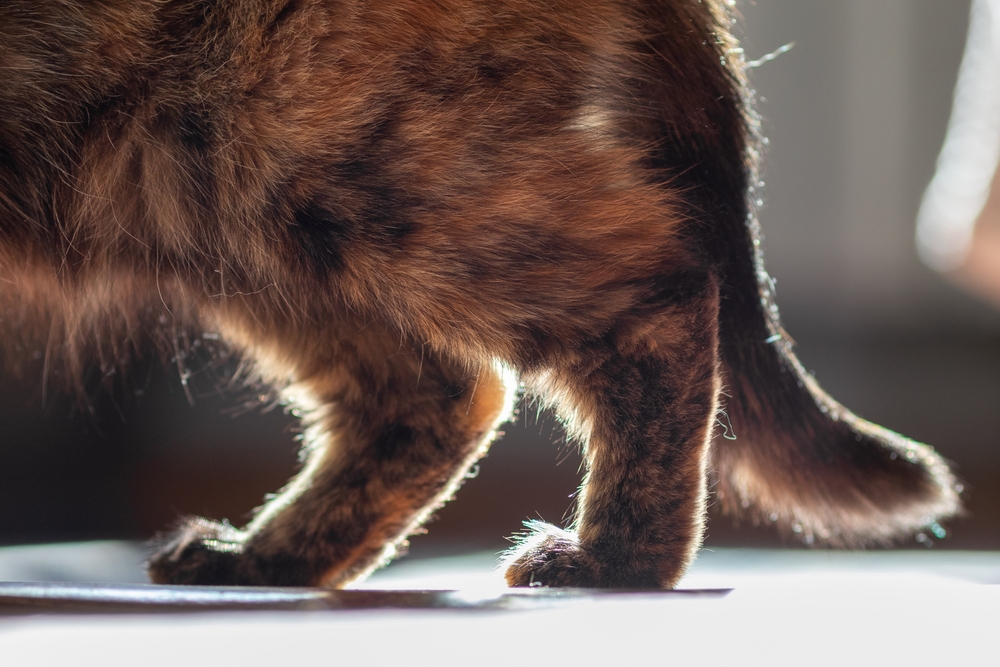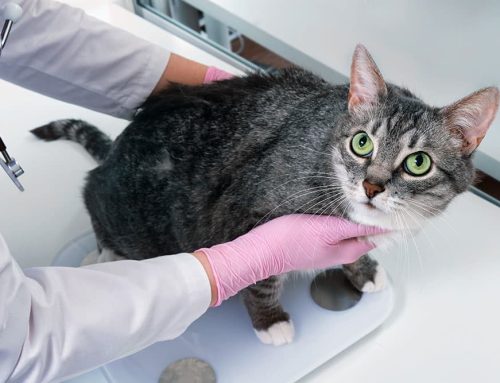You are likely aware that dogs commonly develop arthritis. However, the veterinary profession has only recently recognized that cats develop arthritis as often as dogs. Cats’ arthritis signs tend to be more subtle than dogs’, and recognizing the condition’s earliest signs can be challenging. Although your cat’s arthritis signs may not be obvious, the disease can cause them extreme pain. Learn to recognize feline arthritis signs to help ensure your cat receives veterinary care as soon as possible to relieve their pain. Our Mobile Cat & Dog Vet team explains feline arthritis causes, signs, and treatment options, so you can help your pet receive the pain treatment they need and enjoy a good quality life.
Understanding feline arthritis
Veterinary researchers estimate that arthritis affects 60% of cats older than age 6, and 90% of cats older than age 10. Arthritis (i.e., osteoarthritis [OA] or degenerative joint disease [DJD]) begins when the cartilage lining a joint begins to break down, creating inflammation and further breaking down an affected joint’s tissues, perpetuating the inflammation process. Eventually, bone rubs against bone, and spurs or loose bone chips can develop. Arthritis is a progressive disease, and the signs worsen over time. Left untreated, arthritis causes affected pets serious inflammation, decreased mobility, and increasingly significant pain. While any pet can develop arthritis, certain factors can increase a cat’s risk, including:
- Age — Joints’ chronic wear and tear that occur over time can cause older cats to develop arthritis more often than younger ones. However, cats of any age can develop arthritis.
- Underlying issues — Underlying issues, such as obesity, can increase stress on a cat’s joints, and cause the disease to progress.
- Joint injury or trauma — Cats who have been injured, having experienced a broken bone, dislocated joint, or a torn ligament, are prone to secondary arthritis.
Identifying feline arthritis

Cats hide pain well and—unlike dogs—do not usually vocalize or limp. Cats’ early arthritis signs can be subtle, often including the following behavior changes:
- Decreased mobility — Your cat may begin to experience difficulty jumping up and down, and using the stairs. They may appear stiff when walking, and because they are in pain, your cat may be less active and sleep more.
- Change in temperament — Arthritis is painful, and a cat who develops an aversion to being picked up or handled may be hurting. Some arthritic cats may also hide and become less social.
- Abnormal litter box habits — Changes in your cat’s litter box habits can indicate arthritis. Stiff, painful sore hips, knees, and elbows may lead to an arthritic cat’s litter box aversion. If your cat is experiencing arthritis pain, they may relieve themself in less physically demanding locations, such as on a rug.
By learning to recognize subtle changes in your feline friend’s behavior, you can spot this condition’s red flags quickly. If your cat is exhibiting arthritis signs, schedule a veterinary examination. Your veterinarian can prescribe treatment to help minimize your cat’s arthritis discomfort.
Diagnosing and managing feline arthritis
Your veterinarian may be able to detect joint pain, swelling, or reduced mobility during your cat’s physical examinations. To diagnose your feline friend’s condition definitively, your veterinarian will likely take X-rays of the joints in which they suspect your cat has developed arthritis. In some cases, blood work may be warranted to rule out other causes. Arthritis treatment’s goal is to preserve and protect the cartilage. Because arthritis damage cannot be reversed, your pet’s early arthritis diagnosis is important so that their treatment begins before cartilage damage occurs.
Cats’ arthritis treatment is multimodal. If your cat is diagnosed with arthritis, numerous safe and effective treatment options are available to help improve their quality of life. Treatment modalities may include:
- Pain medication — A new injectable pain medication is now available for cats that can significantly improve arthritis pain. Nonsteroidal anti-inflammatory drugs (NSAIDs) can help reduce arthritis pain. Steroids or opioids may also be prescribed.
- Supplements — Supplements, such as glucosamine, chondroitin, and omega-3 fatty acids, can help support your cat’s cartilage and bones, decreasing their joint inflammation.
- Injectable joint protectants — This treatment involves monthly injections to reduce arthritis pain. For cat owners who do not want to administer medications daily, this therapy is ideal.
- Weight-loss plan — Extra pounds can worsen arthritis pain. If your arthritic cat is overweight, your veterinarian will likely recommend a weight-loss program, special diet, or exercise plan to relieve joint pressure.
- Alternative therapies — Acupuncture, and laser, massage, and stem cell therapies can be beneficial in managing your cat’s pain.
Cats with arthritis can enjoy a good quality life for many years, but over time, chronic pain can negatively impact their mobility. Before your cat‘s condition becomes unmanageable, consider their end-of-life care. If you would like to learn more about pet hospice and palliative care, contact our team at Mobile Cat & Dog Vet.








Leave A Comment